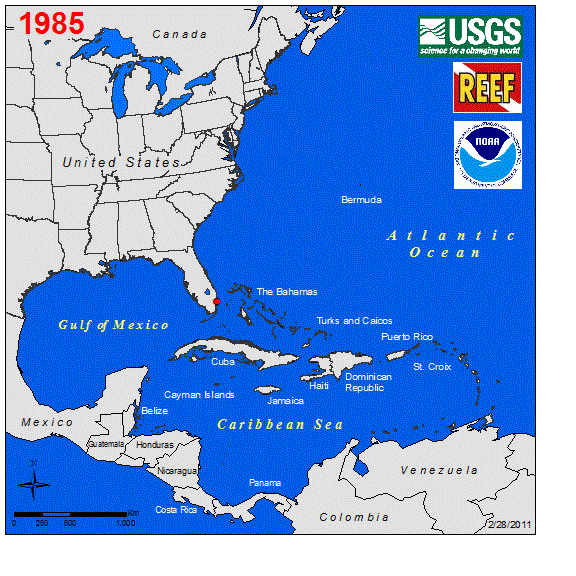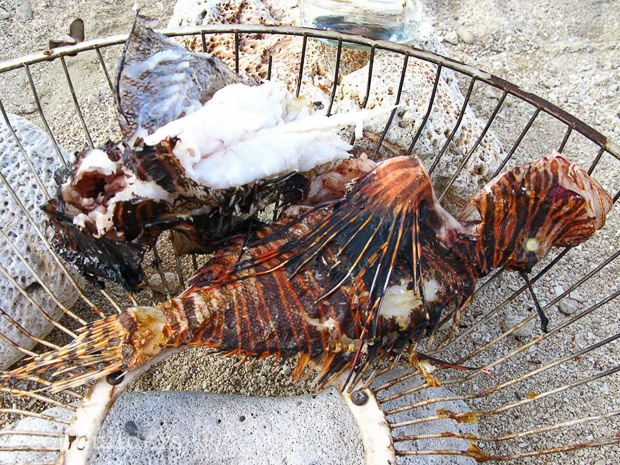I like travelling and diving nearly as much as reefing. These hobbies combine often bring me to great places. Although I currently do not keep any Grammas in my reef, I do love them a lot. When I saw Gramma dejongi for the first time, about 5 years ago, it didn’t even have a scientific name yet but I was impressed by its beauty. These fish were imported from Cuba and swam in De Jong Marinelife’s facility. Taking pictures was not allowed, as these fish would serve as the holotypes for the description of what then could be a new species and, to the delight of Mr. Arie de Jong, actually would turn out to be a new species named after him.
When a dive buddy proposed we should travel to Cuba, it was clear we would not only spend time on culture, salsa, rum and watching classic oldtimer cars but it would also mean diving. Cuba is a bit of a strange country from our western perspective; for example nearly nobody there has official access to the internet. Most Americans cannot legally travel to Cuba, but Europeans face no restrictions.

Before we left, I did some research to find out where Gramma dejongi actually is collected. According to all sources, we should head for Trinidad. Funny enough (check Google maps!) Trinidad has no actual coastline. It is a very nice city though and a good location from which to explore the southern part of Cuba.After a bit of asking around, we found out that we should head for La Boca, about 15 minutes driving from Trinidad. Here we met one of the people involved in collecting the fish we were after, Pedro Sánchez Alba (if you want to dive near Trinidad: strongly recommended. Phone: +53 41 992288 or +53 52895041). He thought it was funny that we inquired about that specific small fish, but we went diving together and diving with him was great fun.
Together we investigated countless overhangs, having seen hundreds of Gramma loreto and G. melacara, one cross between G. loreto and G. dejongi but not a single dejongi. G. dejongi mixes with G. loreto and sometimes a single G. dejongi is found in a large group of G. loreto. Pedro explained that the dejongi are scarce and that actually all Gramma’s in this area are becoming scarce because of the introduction of invasive lion fish, Pterois volitans. Last year we already spotted these in Belize and Mexico, and now we saw large numbers of these monsters in Cuba as well.

When asked why we only saw large lion fish, Pedro explained these fish breed close to the mouth of the river and them swim towards the reef where, yes, G. dejongi are collected. He told us that he had mainly seen them hunting on blue Chromis cyanea and on Grammas. After a few dives together he told us lion fish actually taste very good and that we could have some for lunch next day. A plan came together and he and his son caught quite some of them during our next dive. The technique is quite simple: shoot them with a underwater gun, kill them while holding them with a protective glove at their beak and then cut of the poisonous spines. Then put the fish in the pockets of one of the divers (me…) and on to the next one.
On one hand, it is sad to see a beautiful animal being killed but, while only a drop in the ocean, we really felt we were supporting a good thing. The amount of lion fish in this area is enormous. The problem is that they do not have natural predators here. In their original habitat (Indo-Pacific) they are being hunted down by certain trigger fish, moray eels and bull sharks. Without enough of these enemies, they multiply in huge numbers leading to ecological problems. I strongly recommend others to encourage safe removal of these invasive lion fish from any reef they do not belong. To get an idea about the severeness of the introduction of this species, you can read articles such as these. The map below shows how fast this species spreads.

On the beach, the lion fish were cleaned and then barbecued, Cuban style as the pictures show. Actually, having been barbecued and being accompanied with a refreshing drink, these fish taste really nice. During this lunch, Pedro told he does no longer catch aquarium fish, but as we already learnt during and between the previous dives, he knows a lot about fish and about catching them. He knew about my passion for the G. dejongi and during this talk, he told about a Gramma I had not ever heard of, read all about it in my next installment of diving in Cuba.



